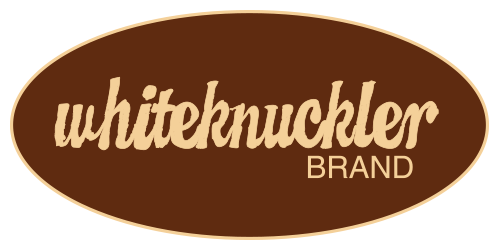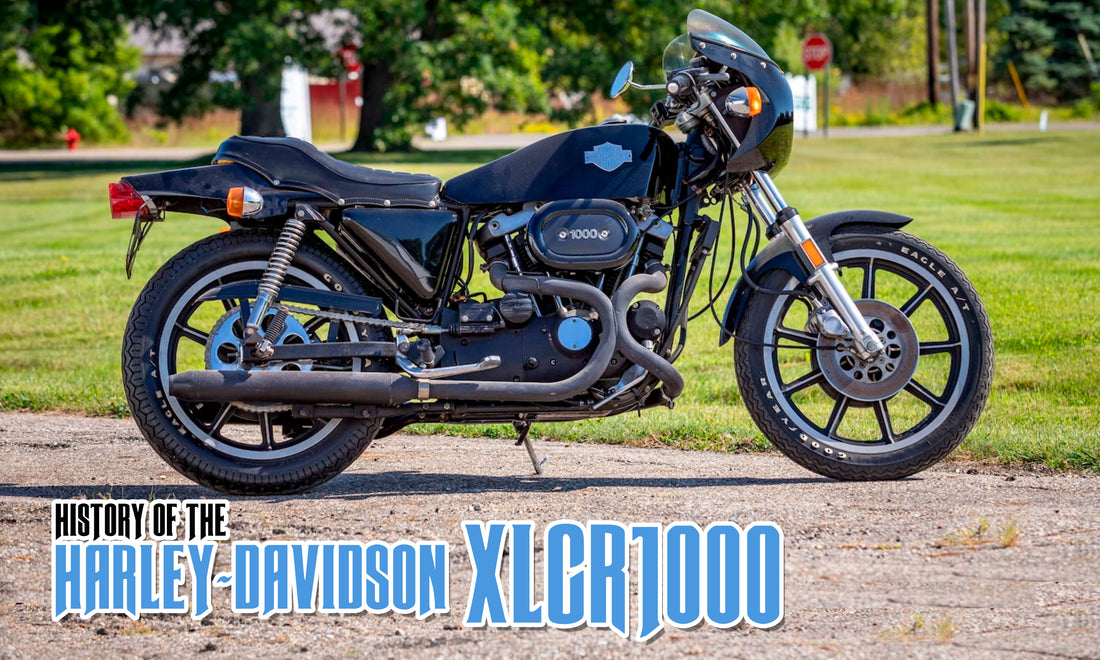The Harley-Davidson XLCR was Harley-Davidson’s first entry into the ever-popular Cafe Racer market. This awesome style of motorcycle was first developed in 1960’s Britain as a way to get around quickly, and Cafe Racers typically offer exemplary handling while sacrificing some ride comfort. Key to the Cafe Racer culture is motorcycles that have an incredibly unique appearance as well.
What the crew known for choppers a la Easy Rider came up with, was an all-new design by Harley-Davidson standards: a sleek bike for getting around in big cities. It certainly made an effort to look cool, with advertisements of the day showing the bike off in alleyways and tight city streets but this unique bike didn’t exactly land well with Harley faithful.

Wondering what the overall impact of the Harley-Davidson XLCR was on motorcycle culture and what made this bike so unique?
Read on to learn more.
Development and History

Before the 1970s, people didn’t really associate Harley-Davidson with compact bikes. Harley-Davidson’s image came more from bobbers and choppers but Willie G. Davidson, the chief designer at Harley-Davidson, knew more this his share about upcoming motorcycle trends.
He saw “scenes” developing throughout the UK and the United States in which motorcycle riders would modify their existing bikes to make them smaller, lighter, and faster - often at the expense of comfort. The bikes had their own personality separate from what was widely manufactured and available.
With the desire for a bit more speed for short drives, Harley-Davidson touted the XLCR’s ability to run the quarter-mile in under 12 seconds - making it the fastest production model Harley-Davidson available - though not the fastest motorcycle available.

Since Willie G. Davidson was part of the Cafe Racer scene himself, it is believed he planned it as a bike he would personally use and make for himself. It’s also believed that people above him at Harley-Davidson so liked the idea they wanted to mass manufacture it.
The XLCR didn’t actually sell all that well, since other smaller British and Japanese Cafe bikes sold better and received higher praise. As a segue from the original inspirations for Harley-Davidson, it does truly stand out as a rebellion against the visions of its own manufacturer.
That said, let’s look at what’s going on under the skin of the XLCR.
Engine

The XLCR shared an engine with the Harley-Davidson Sportster, and this 998cc engine was rated at 61 horsepower and could reach speeds of 110 miles per hour.
While these numbers sound great, and 110 miles per hour is still pretty fast for a 1970’s cafe racer, it wasn’t as fast as Kawasaki models or other British models from where the racer scene originated. Kawasaki, for example, could outperform the Harley by at least 1 second in a quarter-mile run.
This is of course not to say that the XLCR is slow by any means. Give it some gas and riders certainly felt the torque from the Sportster V. This unique bike was also very easy to use and shift compared to other bikes, giving riders the ability to make use of the XLCR’s abilities easier than other more fussy bikes.

Like many engines that were produced in the 1970s, most reviewers would call them “bulletproof,” which in context meant they were built well and didn’t need many repairs. There’s a good chance you can still find a used one today that has had some tender loving care over the years and will still make for a great ride.
Fun was really the name of the game with the XLCR design. Unfortunately, most Americans and even Harley owners didn’t really see it that way. The XLCR is more of a legend from its diversion from traditional Harley-Davidson, (and the badass, all-black appearance) than it is as a performance bike amongst competitors.
Still, there’s no denying it was a fun bike.
Chassis

One of the best ways to describe the results of the XLCR chassis is “adventurous.” In some ways, this literally means that some parts of the bike, like the brakes, weren’t all that sensitive and didn’t work amazingly well. However, the ride itself was more fun than comfortable.
Since the design was not originally meant for mass production, these issues were part of the point. Harley’s are more often than not comfort bikes with speed and style than point and shoot sportbikes.
The XLCR was built with the Sportster front end and the steel swingarm and rear shocks of an XR750, which was Harley’s race-winning flat track bike and it was this combination of components that were not known to give a decent ride quality but certainly produced a unique ride with lots of character and fun.

Another unique part of the XLCR was the unequal exhaust length which helped produce a unique sound that was certain to get attention while driving through city streets. Anyone who has ever turned their head at the sound of a motorcycle (or been woken up by one) knows what we mean here.
The goal of the XLCR was met by the bike itself. Loud, attention-getting, fairly fast by American standards, and according to Cycle World, not all that comfortable. The bold all-black look of the XLCR contrasted with testers not wanting to ride one for more than 20 minutes, which is ironic, beach this machine was the perfect way to get home from a concert in the city late at night.
Impact on Motorcycle Culture

We’ve given the XLCR its fair dose of criticism for what it didn’t do well, and we also haven’t talked much about its rather high price compared to other new bikes at the time.
What the XLCR did do was look cool and go fast while attempting to join a culture of motorcycles that cared more about performance, style, and speed than it did comfort. All while having a chassis and engine that you didn’t have to worry much about.
There were few XLCRs made at just over 3,000, and this makes the bike rather difficult to find today and often pricer higher than new when you can find it on the market. In its final year of production, Harley-Davidson built just 9 XLCRs.

The XLCR appealed to city dwellers and those who wanted to get around in a small area quickly. Many reviewers also loved the ability to split through traffic on daring rides since the XLCR was pretty fast and with its loud exhaust - pretty noticeable.
All in all, it was an awesome bike that was poorly marketed to the wrong audience. No matter how badly Willie G. wanted to break Harley free of the biker image, the XLCR was not the bike to do it.

